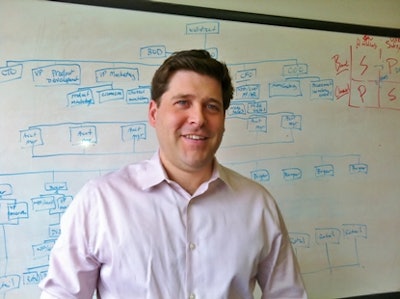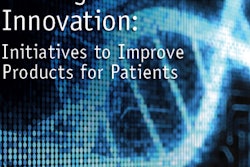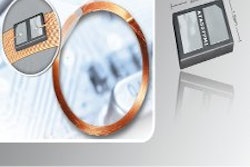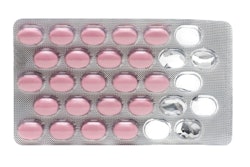
Ordering medications online in an effort to save money can potentially be a life-or-death gamble for a consumer.
For manufacturers, distributors, and retailers of legitimate over-the-counter and prescription drugs, making sure that their products get through the complex distribution chain is critical. Monitoring that flow online is now more manageable with Channel IQ.
In the following interview, Healthcare Packaging talks with Wes Shepherd, CEO of Channel IQ, a Chicago-based firm that monitors brand name products and prices, helping manufacturers, distributors, retailers better understand their markets, and competition, as well as tracking gray market sales activity, and potential counterfeiting activity.
Healthcare Packaging (HCP): What markets does Channel IQ serve?
Wes Shepherd (WS): We are in electronics, appliances, automotive parts, apparel, and is expanding in pharmaceuticals and nutraceuticals, working with many of the biggest brands in those markets.
HCP: Pharmaceutical products carry considerable value, yet based on the fact that electronics represent your largest market, pharmaceuticals would seem to lag behind in terms of tracing their product through distribution. Why might that be?
WS: I don't think it's for lack of effort, but rather lack of good Internet monitoring technology. With our automation technology and targeted online data collection for a given pharmaceutical company, we can quickly examine the market and find legitimate and counterfeit activity. For example, we might look for drugs being sold below their cost in a given country when we know it's difficult to get them below cost. In this case it's highly likely the drug is counterfeit. Or in many cases, just finding drugs online is enough since the sale violates laws or distribution agreements. We also might look for counterfeiting in a specific region or we might look for a seller with a specific parameter around them that would indicate that they are not a legitimate retailer. What might take somebody days or weeks or even months to get information about, we can sometimes get within seconds. To use a medical analogy, we have to break down the online distribution world like a genome project. We have to break down the DNA of these sellers and these products into a recognizable format for it to be actionable information where you can address the threat or even capitalize on an opportunity if one exists.
HCP: Who are your primary customers in the distribution chain?
WS: Our customers are principally manufacturers, although we are seeing more distribution and retail clients that want the same data for different reasons. Ultimately, everyone is trying to gain better visibility and control in order to gain pricing information and competitive advantages and channel control, especially with respect to online retail endpoints. For a distributor, they can spot gray market sales and learn where they may have sold to somebody whom they weren't supposed to sell a product to. They can also maintain their competitive stature by adjusting their own sale prices if they are able to. They are able to acquire more customers because we can bring back all of those retailers and show them who is selling like products. On the other side, manufacturers are typically trying to keep pricing in line with the market and making sure that their genuine products are making it through the right dealers to the right customers.
HCP: How do you define and differentiate the gray and counterfeit markets?
WS: The gray market is legitimately manufactured product made for one market but being sold in another market. This could be somebody who has bought it from another retailer, or bought it from a distributor, but oftentimes not directly from the manufacturer. The retailer may not have any relationship with the manufacturer and may not be able to support that product or train people about the product. Counterfeits are copies of an original product that represent a greater threat because in pharmaceuticals, a counterfeit product can actually kill somebody.
HCP: In your opinion, what role can packaging play in addressing counterfeit pharmaceuticals?
WS: Packaging has a very important role. It has to signify the authenticity of this product, and not just hold the product or explain the benefits of the product. There are some interesting technologies out there, such as holograms, but let's be honest, industry will constantly be combating counterfeiting. It's just going to keep escalating because pharmaceuticals represent an incredibly lucrative market. So packaging is great, but ultimately the industry will have to keep coming up with other technologies. The biggest problem I see is that packaging is no longer the key to ensuring product legitimacy for gray market and counterfeit concerns. With the Internet, people can represent a product as legitimate and there are few ways to guarantee its legitimacy. We now have a new product that does this called authorized dealer badging. We can instantly give any product page being viewed by a consumer immediate verification of its authenticity and warranty.
-Jim Butschli, Editor, Healthcare Packaging
For manufacturers, distributors, and retailers of legitimate over-the-counter and prescription drugs, making sure that their products get through the complex distribution chain is critical. Monitoring that flow online is now more manageable with Channel IQ.
In the following interview, Healthcare Packaging talks with Wes Shepherd, CEO of Channel IQ, a Chicago-based firm that monitors brand name products and prices, helping manufacturers, distributors, retailers better understand their markets, and competition, as well as tracking gray market sales activity, and potential counterfeiting activity.
Healthcare Packaging (HCP): What markets does Channel IQ serve?
Wes Shepherd (WS): We are in electronics, appliances, automotive parts, apparel, and is expanding in pharmaceuticals and nutraceuticals, working with many of the biggest brands in those markets.
HCP: Pharmaceutical products carry considerable value, yet based on the fact that electronics represent your largest market, pharmaceuticals would seem to lag behind in terms of tracing their product through distribution. Why might that be?
WS: I don't think it's for lack of effort, but rather lack of good Internet monitoring technology. With our automation technology and targeted online data collection for a given pharmaceutical company, we can quickly examine the market and find legitimate and counterfeit activity. For example, we might look for drugs being sold below their cost in a given country when we know it's difficult to get them below cost. In this case it's highly likely the drug is counterfeit. Or in many cases, just finding drugs online is enough since the sale violates laws or distribution agreements. We also might look for counterfeiting in a specific region or we might look for a seller with a specific parameter around them that would indicate that they are not a legitimate retailer. What might take somebody days or weeks or even months to get information about, we can sometimes get within seconds. To use a medical analogy, we have to break down the online distribution world like a genome project. We have to break down the DNA of these sellers and these products into a recognizable format for it to be actionable information where you can address the threat or even capitalize on an opportunity if one exists.
HCP: Who are your primary customers in the distribution chain?
WS: Our customers are principally manufacturers, although we are seeing more distribution and retail clients that want the same data for different reasons. Ultimately, everyone is trying to gain better visibility and control in order to gain pricing information and competitive advantages and channel control, especially with respect to online retail endpoints. For a distributor, they can spot gray market sales and learn where they may have sold to somebody whom they weren't supposed to sell a product to. They can also maintain their competitive stature by adjusting their own sale prices if they are able to. They are able to acquire more customers because we can bring back all of those retailers and show them who is selling like products. On the other side, manufacturers are typically trying to keep pricing in line with the market and making sure that their genuine products are making it through the right dealers to the right customers.
HCP: How do you define and differentiate the gray and counterfeit markets?
WS: The gray market is legitimately manufactured product made for one market but being sold in another market. This could be somebody who has bought it from another retailer, or bought it from a distributor, but oftentimes not directly from the manufacturer. The retailer may not have any relationship with the manufacturer and may not be able to support that product or train people about the product. Counterfeits are copies of an original product that represent a greater threat because in pharmaceuticals, a counterfeit product can actually kill somebody.
HCP: In your opinion, what role can packaging play in addressing counterfeit pharmaceuticals?
WS: Packaging has a very important role. It has to signify the authenticity of this product, and not just hold the product or explain the benefits of the product. There are some interesting technologies out there, such as holograms, but let's be honest, industry will constantly be combating counterfeiting. It's just going to keep escalating because pharmaceuticals represent an incredibly lucrative market. So packaging is great, but ultimately the industry will have to keep coming up with other technologies. The biggest problem I see is that packaging is no longer the key to ensuring product legitimacy for gray market and counterfeit concerns. With the Internet, people can represent a product as legitimate and there are few ways to guarantee its legitimacy. We now have a new product that does this called authorized dealer badging. We can instantly give any product page being viewed by a consumer immediate verification of its authenticity and warranty.
-Jim Butschli, Editor, Healthcare Packaging



















